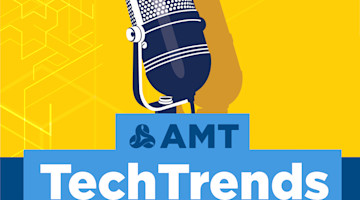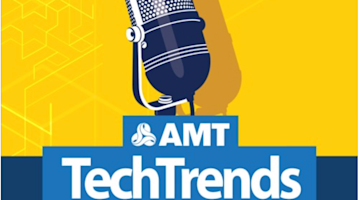Over the past 50 years, the Consumer Electronics Show (CES) has attracted both business leaders and “outside-the-box” thinkers. CES is the global stage and proving ground for innovators and breakthrough technologies in the upcoming consumer technologies market. As an industry analyst at AMT, I get to see and hear about new advancements in the manufacturing technology industry, so I was ecstatic to have the opportunity to attend CES and explore the robotics and 3D printing industry.
CES is a massive show, and it was overwhelming at first as a solo attendee, but that didn’t stop me from thoroughly enjoying my hunt. I specifically sought robotic arms that allow for end of arm tooling or have an end effector for additive manufacturing, while also keeping an eye out for any 3D printers with metal capabilities. What follows is a spotlight of three companies I visited.
Harmonic Drive engineers and manufactures precision servo actuators, gearheads, and gear component sets. Harmonic Drive actuator and gear applications are seen in robotics, spaceflight applications, semiconductor manufacturing equipment, factory automation equipment, medical diagnostics, and surgical robots. During CES, Harmonic Drive had a robotic arm fitted with one of their actuators. The rotary actuator equipped to the arm produces high force and unparalleled positional accuracy. Harmonic Drive manufactures their own cross roller bearings, harmonic and planetary gearing, and state-of-the-art brushless servo motors and encoders, allowing them complete control over the design of these critical components for their products.
Haddington Dynamics displayed Dexter, their “3D Printed 7-Axis Robotic Arm.” Haddington Dynamics supplies their 7-axis fully assembled robotic arms and kits to NASA, GoogleX, and Toshiba. Dexter, fitted with custom gripper fingers, was originally made using PLA material; a customer suggested the use of Markforged’s Onyx material that contains continuous carbon fiber reinforcement to achieve desired strength. Thus, the Haddington Dynamics and Markforged relationship was born. Dexter is now almost completely made from Markforged 3D printer parts, saving Haddington Dynamics 58 percent in costs.
Markforged was founded on the intersection of traditional manufacturing and cutting-edge material science. Markforged has created the world’s only ecosystem of plastic, metal, and composite 3D printers. Most notably, they offer Atomic Diffusion Additive Manufacturing (ADAM), whose four-step process of “Design, Print, Sinter, and Part” blends 3D printing and metal injection molding. After designing a part, uploading the file, and selecting the metal materials to be included, metal powder bound in plastic is printed into the part’s shape layer by layer, scaling up to compensate for shrinkage during the sinter phase. The finished part is pure metal and ready for use.
Although manufacturing technology is not seen as “mainstream” at CES, it has not stopped companies from exhibiting at the show year after year. Advancements like robotic arms, metal 3D printers, and servo actuators are critical to continued innovation of consumer-grade tech. Consumers are realizing and appreciating the fact that their beloved daily-use electronics (or parts of them) are designed, machined, and produced through technologies exhibited at CES and IMTS.





